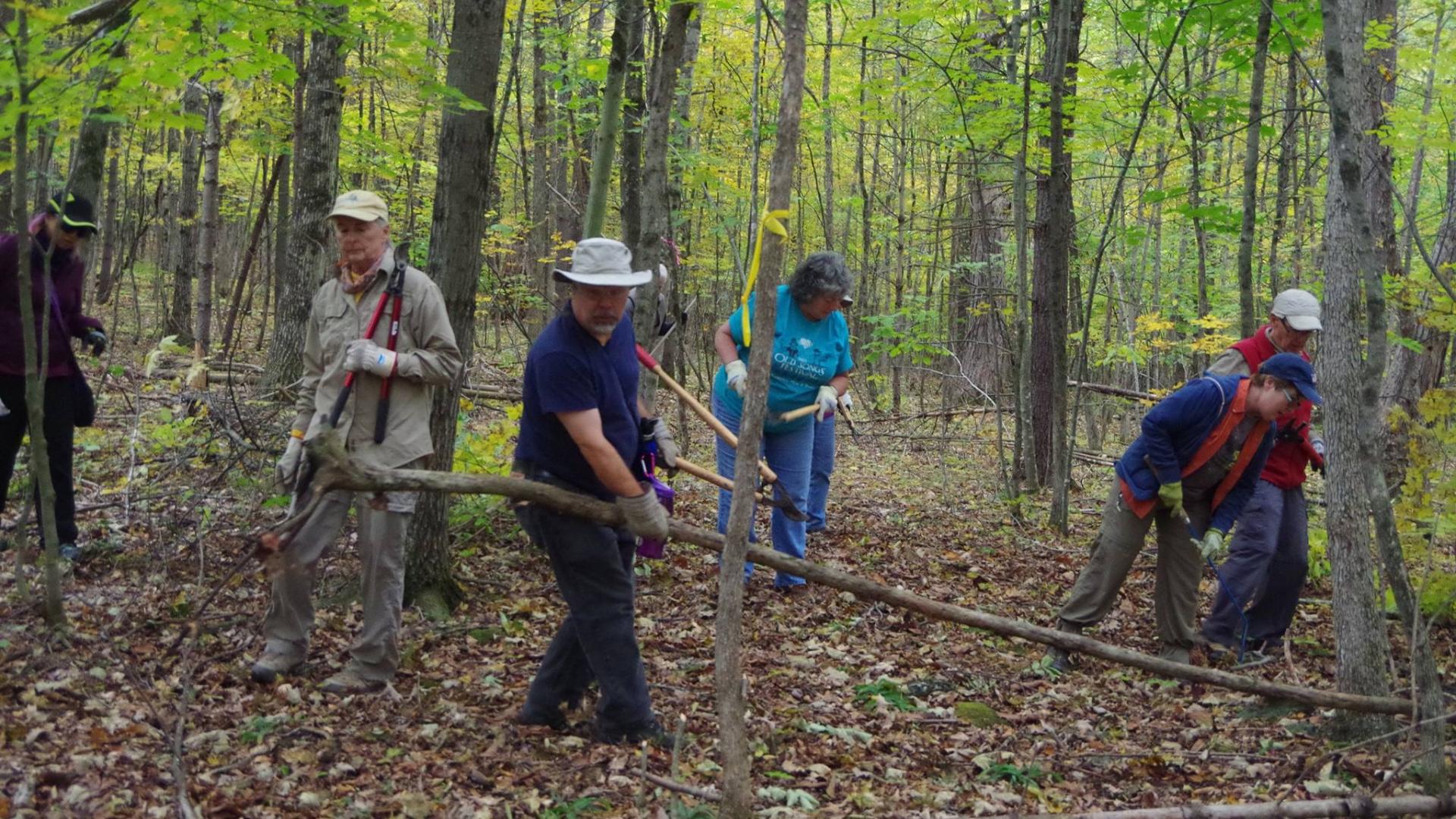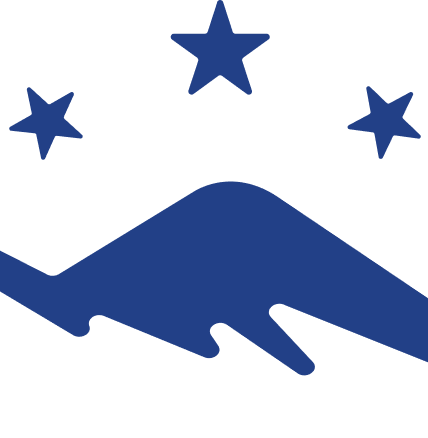Tim Rowland, New York Times best-selling author, writes about building trails in the Adirondacks with the Champlain Area Trails.
I’ve been building a lot of trails lately, some of them intentionally. Others just sort of spontaneously happen when I am out flailing about in my woods and I have to brush out a thicket just to get home.
Being that my property is not in the forest preserve, I’ve seen fit to try to build a trail or two, for my own use and perhaps for posterity. And the handful of resulting brush piles, which once would have been considered an unholy mess, are now widely applauded as good habitat for wildlife. I wish I’d had this knowledge when I was a boy, since I could have countered my mom’s demands that I clean my room by arguing that I was instead creating a habitat.
My more formal trail building, however, has been as a volunteer for the Champlain Area Trails (CATS) organization, which maintains 50 miles of trail through the agricultural valleys and lakeside mountains of eastern Essex County.
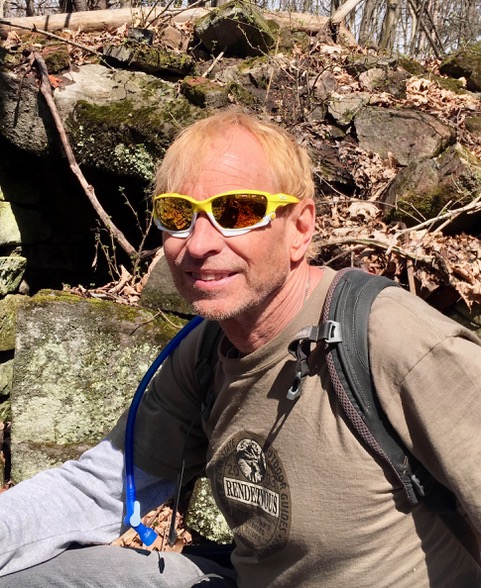
Work day/play day
Trails with CATS are built and maintained on designated “work days,” although it doesn’t really feel like work. On any given outing, we might have a dozen people — there are always some familiar faces, and always some new faces, all of them happy — who on that day will create a recreational destination out of a previously unused (by humans) hill or dale.
The routes will have been chosen by CATS Executive Director Chris Maron and Trail Steward Bill Amadon. Sometimes Bill will have roughed out the trail and the volunteers will widen it and clean it of debris. Other times, Bill will have marked the route with survey tape, but other than that we are starting from scratch. Sometimes we will cover a mile or so. Or, we might spend the whole morning on a fifty-foot section, muscling rock along a contour to protect the trail from erosion.
I always think of the late George Carlin’s observation, “Have you even started a path? No one bothers to start one. It’s a little hard, you have to hold the grass down yourself at first.” But there are people throughout the mountains who start paths, and it’s quite gratifying for the rest of us when they do.
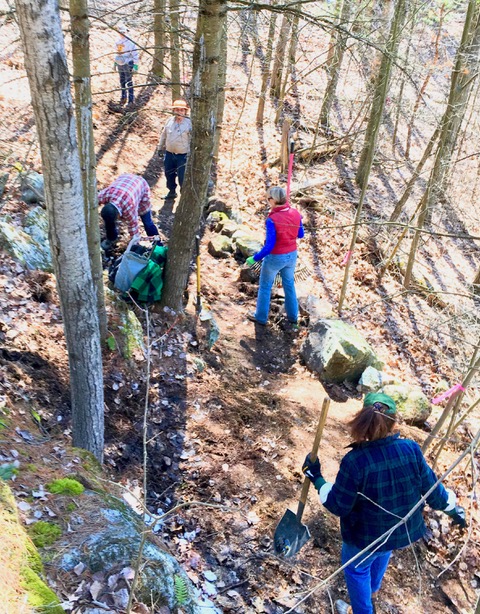
Learning appreciation
I wouldn’t call trailbuilding a duty really, but I would say this work is like learning an appreciation for art or wine. We think of a trail as a path through the woods, a leafy conduit from Point A to Point B. But, a lot of thought has gone into every foot of that trail, at least the modern trails.
I’m not so sure about the old mountain men who cut the first trails in the Adirondacks, whose philosophy seemed to be that the steeper the trail the faster you would get to the top. For these outdoor ancestors, lacking GPS or altimeters, the most dependable way to summit a mountain was to follow a stream or a slide or any other feature that was induced by gravity. It was an effective strategy, but it generally led to trails that followed the steepest, muddiest and slipperiest routes.
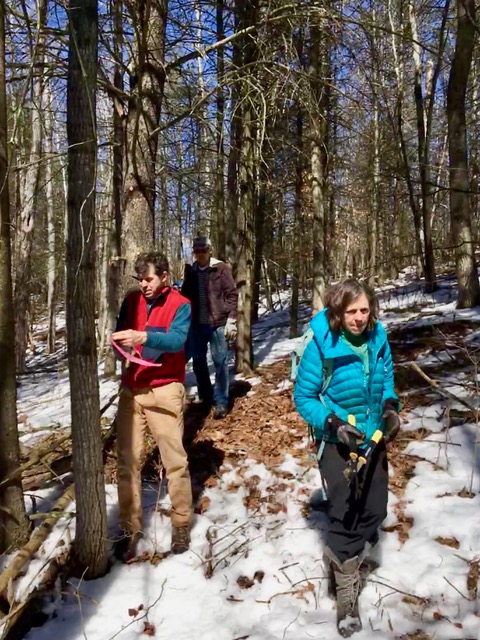
Route planning
Today, the route-planning begins not in the woods, but in a room surrounded by topographical maps. Once he’s studied the terrain on paper, Bill heads into the woods with a phone app that marks his progress and allows him to try out routes and select the best one. From a nest of squiggles on an electronic screen, he’s able to home in on the easiest, safest and most scenic route.
These trails sweep gracefully past interesting natural features and maintain a grade that is easier on the knees than trails of old. Once the trail has been conceptually sketched out, a considerable amount of care goes into designing it at a micro level. Bill tends to talk out loud as he’s thinking through a route, which is a treat for anyone wanting to learn some of the science behind the art.
Often it’s what is invisible — hidden beneath the leaves and duff — that determines the course. What might appear to be an obvious path might be ruled out because of unstable scree or because the humus along the bottom of a slope collects too much moisture and will become muddy with use.
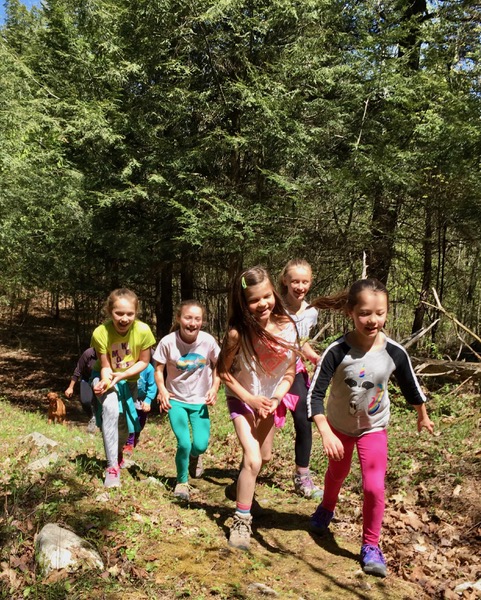
Safety — a primary consideration
I got a taste of this while helping Bill maintain the CATS Homestead Trail, a beautiful, forested route roughly following an abandoned town road near Whallonsburg that passes (if you know where to look) two haunting sets of farmhouse ruins. Seeing what I thought was an easier way across a babbling brook, I suddenly found my feet pointed up toward a set of clouds that, in other circumstances, I would have found quite picturesque. What I had failed to calculate was that the leaves hid a smooth, wet, and wickedly slippery slab of bedrock.
Nor can a trailbuilder just look at the ground as it stands today; the route has to be planned envisioning how it will hold up to thousands of booted feet. Bill’s practiced eye can tell what soils are durable, and which are not. He knows what rocks will become loose in time, and which can stand up to a constant pounding. The safety of the hiker is the primary consideration in any trail.
Different trailbuilders will have different signatures, and will also vary depending on whether they were built by a lone wolf or a full-fledged crew, such as the Ranger’s Trail up the face of Poke-O-Moonshine, which is magnificent cathedral of stonework. Bill’s trails bear his signatures as well. If avoidable, he prefers not to follow old logging roads because they tend toward swampiness, and are more indicative of man’s intrusion into nature, than of nature itself. He will also employ a series of short, almost quaint, switchbacks to save the hiker from having to depend on brute strength to climb a steep pitch.
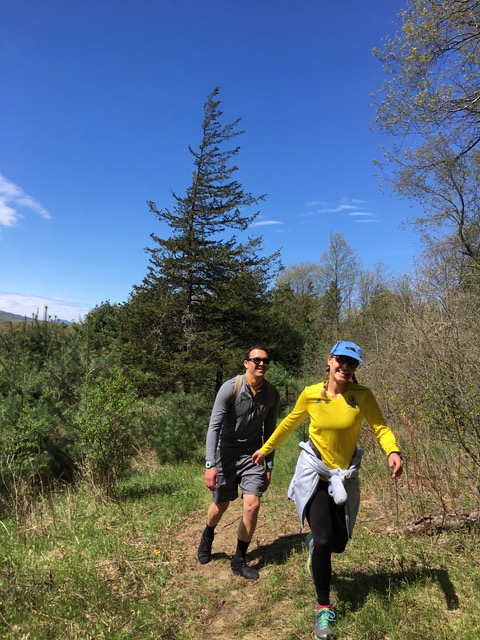
Proper design
Following a trail builder around is a good education, because it helps you notice what is designed not to be noticed. A properly designed trail is the result of a thousand decisions, and does not itself intrude upon the hiker’s enjoyment of the outdoors. Bill’s trails have an almost melodic rhythm to them, as they meander up and down, and sway back and forth. Hiking becomes an activity that is more invigorating than tiring.
This is not how I build my trails. I go for the easiest route that will save me from the most amount of work. But then, I’m an amateur. I do wonder though, if the trails will last. My dad, a forester, was skilled at trails, and once built one that traversed a West Virginia hillside on the land where I grew up. There were several hives along the way, so he called it the Bee Trail (there was also an old outhouse, but when naming it, he went with the bees.) The trail is gone now, which makes me a little sad, but not really. There’s a good chance the trails I’m cutting on my property will disappear as well. There are things that are far worse than being reclaimed by nature.
If you decide to partake in the beautiful nature of the Lake Champlain region's different trails, you will have plenty of options for hiking. You can even stay and make a weekend of it.

